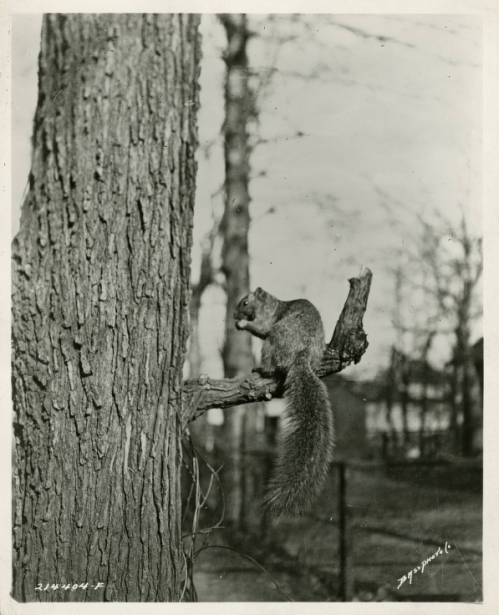Beginning during the second half of September 1822, Indianapolis residents witnessed a massive westward migration of gray squirrels, crossing “the river at several places in almost countless numbers” and swarming through the town. Local attorney reported “many people lost whole cornfields” and that the region’s corn crop was “literally destroyed,” noting that 12 squirrels were capable of as much devastation as one hog. Fletcher cited one local farmer who “killed around one cornfield 248 [squirrels] in 3 days.” Others who hunted in their fields observed that the “massacre made no impression on their countless numbers.”

This phenomenon occurred periodically in North America in the 19th century. Reports like Fletcher’s appear in the journals of hunters, farmers, and explorers. The squirrels moved in a roughly southeasterly direction. Large bodies of water did not stop them. They crossed the Ohio (1819), the Niagara (1866), and Mississippi (1881) rivers.
The reasons for these migrations remain unclear. However, they could be attributed to a bountiful crop of nuts and seeds, leading to a boom in the squirrel population, followed by a sparse year. The failure of surrounding woodlands to produce sufficient mast (nuts) to support the increased squirrel population in the meager year might have sparked population movement.
Several other migrations occurred across Indianapolis over the decades, most notably in 1845. Even though the latter “invasion” was less extensive and destructive than the 1822 occurrence, the squirrels caused thousands of dollars in damage as they swept through town.

Help improve this entry
Contribute information, offer corrections, suggest images.
You can also recommend new entries related to this topic.